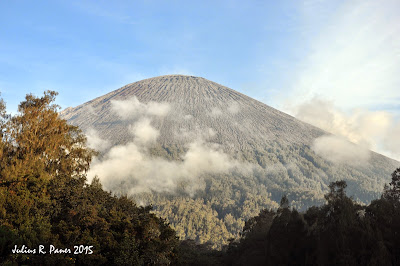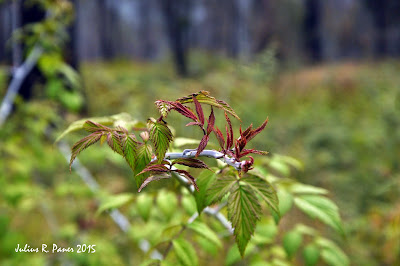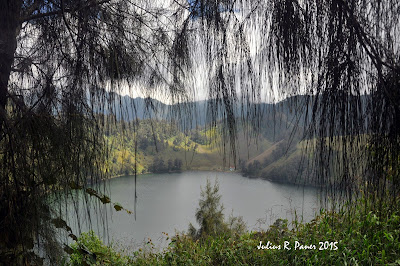Beneath the
vast mountain ranges of East Java lie several volcanoes that have become an
icon of mountaineering in Indonesia. This part of the earth is unique in a
sense that it has several attributes that separates it from other tropical
mountains in Asia and other parts of the world.
Last week I
stayed in Indonesia for 6 days along with my very good friends Josephine Devera
and Pare Oliver “Dockie” Enot to discover three of its mountains there; Mt.
Semeru, Mt. Bromo and Mt. Ijen. These
heaps were particularly laid into the island of East Java and we came all the
way there using the Manila-Kuala Lumpur-Surabaya route. Our long plane travel with
Pare Dockie from Davao added several strain as it took us almost 15 hours to
reach the city of Surabaya, one of Indonesia’s cleanest cities.
Our first
stop was Mt. Semeru, the highest mountain in Java and third highest in
Indonesia. It is a major hiking destination that entails a lot of physical
preparation especially if one decides to trek its summit. Mt. Semeru is also
called Mahameru by Indonesians, meaning “The Great Mountain”. Pare Dockie,
Josephine and this blogger tried to seek information as to who were the first
Filipino mountaineers who already climbed Mt. Semeru. We are interested into
this because there is no record as of yet in as far as our guide is much
concerned. It might be unofficial but we can partially say that we were
possibly the first Pinoys to have reached this summit.
Meanwhile, we
did the trekking in three days, with the first and third days just an easy
plain trail hiking and sight-seeing. On the second day, however, the summit
attack was traumatic. The itinerary crafted by our guide Amit was quite
favorable. We started the hiking in Panu Rane (7 hours ride from downtown
Surabaya), a small community some 2,000 meters above sea level. This spot also
serves as a stopover for mountain climbers. The home stay program they devised
to accommodate their guests is very helpful especially if climbing groups want
a comfortable pre-climb sleep. Panu Rane is more or less 8 kilometers to Kali
Mate campsite, the last campsite before heading to Semeru summit. Along the way
there are break stations they called POS 1, 2 and 3 where vendors sell fruits
and local delicacies. The huge plain
landscape in Kali Mate is suitable for big group camping. It has available
water sources also.
We started
the summit attack on the second day in a very early 1:45 in the morning with a
chilling temperature of 6.5 degrees Celsius. Standing tall at 3,676 meters
above sea level, Mt. Semeru is one hell of a mountain to climb in its last 3
kilometers track. If in Mt. Apo we have our Boulder Face just before the
summit, Semeru has its Sand Face – a long and grueling portion for mountaineers
to traverse because of the sandy facet of the mountain. Our summit attack was
interrupted with the gravity of sand. And because Mt. Semeru had erupted
several times in the past, the remnant of lahar and other volcanic matters
occupy a large portion of the summit trail. In the sandy trail you cannot
afford to relax because anytime the sand may roll down and there is a big
chance for you to be swayed away along with the sand all the way down. The
rocks are extremely loose, therefore sitting into it is not a good idea as it
may fall quickly. Along the way we saw many climbers descending without even
reaching the summit. There was even a woman climber who suffered hypothermia
during the ascent. They could not surmount the extremity of the summit track.
At around
7:00 in the morning, we reached the summit of Mt. Semeru. The setting is
beautiful featuring a 360-degree view of the entire Java Island. On the other
side we saw Mt. Bromo and Mt. Penunjakan. Our team stayed at the summit very
quickly because the temperature and strong wind were hard to bear.
The descent
was quite fine we arrived back to Kali Mate camp in less than two hours. Our
next stopover in the second evening was at Ranu Kumbulo. While trekking to Ranu
Kumbulo, we saw the glory of Mt. Semeru as we passed through several gorgeous
sights including the pine trees dominating the vegetation of the area. Some
flora species were common in tropical sites just like ours in the Philippines
but I saw some strange plant life such as these pictures:
We reached
Ranu Kumbulo 3:00 in the afternoon and spent the rest of the evening there. One
good thing about Ranu Kumbulo is that it is where climbers converge, from the
slow trekkers coming from Ranu Pane and the summiters from Kali Mate. We
enjoyed the view of the Ranu Kumbulo lake. The still water is amazing as it was
kissed by the vertical hills. The lake is also the source of drinking water for
mountaineers. We were told by Amit that the lake had once a shoot venue of a
local movie in Indonesia entitled 5 centimeters. Ranu Kumbulo, just like the
Semeru summit, is surrounded with mystery as the locals would put it.
Looking at
far distance, the lake can even be more tempting. Its beauty is very apparent
whichever angle I shoot it. And because it is nestled 2,400 meters above, Ranu
Kumbulo is perhaps one of the tallest lakes in Indonesia.
In an
overall context, Mt. Semeru is a must-visit mountain if you are a mountaineer
residing in Southeast Asia I would rate a bit harder than Mt. Kinabalu. As
Josephine also pointed out, Semeru is even more interesting than the famous Mt.
Fan Si Pan in Vietnam and all other mountains she visited in Asia.
Note: This
article is the first offering I did out of that travel in Indonesia. I will be
coming up with my second post in the next couple of days that will feature two
minor climbs in the same location.
For the
record, this climb is my second international climb with Pare Dockie. The first
one we did an assault of Mt. Kinabalo in Sabah, Malaysia two years ago.
Lastly, this climb
would not be made possible without the strong support of Miss Josephine. Pardon
my saying this but you deserve recognition for your very kind heart especially
to your mountaineer friends. Thank you alone, I guess, is not enough but I will
be delighted to have these words said to you every now and then. Thank you very
much my friend.

































No comments:
Post a Comment